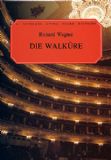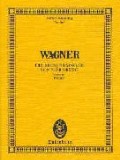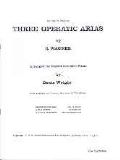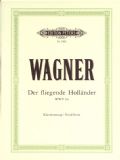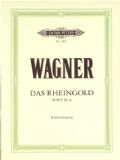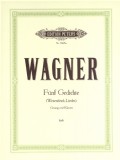
Richard Wagner
There is more literature, research and debate concerning Wagner than almost any other composer in Western music. What makes this even more startling is that, with few exceptions, his entire output is restricted to the single genre of opera.
Wagner’s idea of the 'Gesamtkunstwerk' (total artwork) dominates his style, with his works attempting to engulf the listener in dense, lengthy journeys through mythical tales, painted in relentlessly chromatic music. Indeed, each of his colossal operas requires patient and avid audience members, not simply due to the musical style but also to the rhapsodic nature of the storytelling.
Hidden under much of the controversy of Wagner’s move from revolutionary socialism to German nationalism, his well-publicised anti-Semitism, his posthumous appropriation by Hitler and the Nazis, and ongoing criticisms of the length and nature of his works, is a creative genius of proportions almost unmatched in the history of music.
In such scores as Tristan und Isolde and Parsifal, Wagner anticipated the end of tonal music (centered around a 'key'), embracing instead an unresolving chromaticism that points towards the atonal experimentation of Schoenberg and his followers in the early 20th century. To the audience, this can be tremendously unsettling, but simultaneously hugely involving and emotional, and there is no doubting the composer’s supreme skills as a melodist and orchestrator. With Der Ring des Nibelungen or 'The Ring Cycle', Wagner managed to combine his music with storytelling on an unprecedented scale which has never been equalled.
Bestselling Titles by Richard Wagner
-
Publisher: G. SchirmerUsually despatched within 7-10 working days - Lead times may vary in the case of supplier shortages or delays$35.55
-
Publisher: EulenburgIn Stock: Usually despatched within 24-48 hours$15.23
-
Publisher: R Smith & CoSpecial Order: Usually despatched within 10-15 working days - Lead times may vary in the case of supplier shortages or delays$10.80
-
Publisher: Peters EditionUsually despatched within 7-10 working days - Lead times may vary in the case of supplier shortages or delays$44.39
-
Publisher: Peters EditionUsually despatched within 7-10 working days - Lead times may vary in the case of supplier shortages or delays$52.01
-
Publisher: Peters EditionUsually despatched within 7-10 working days - Lead times may vary in the case of supplier shortages or delays$21.53



